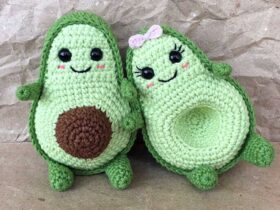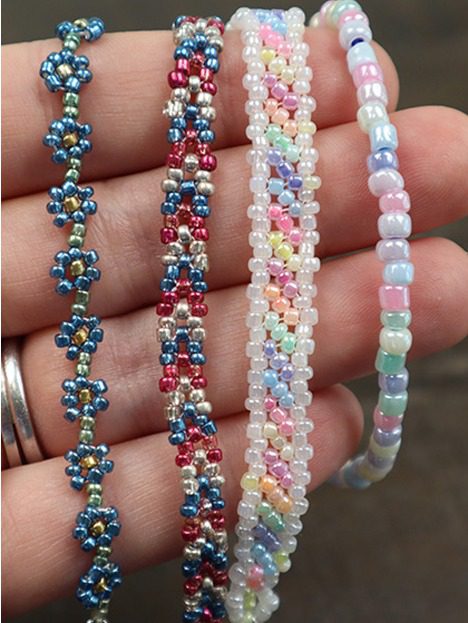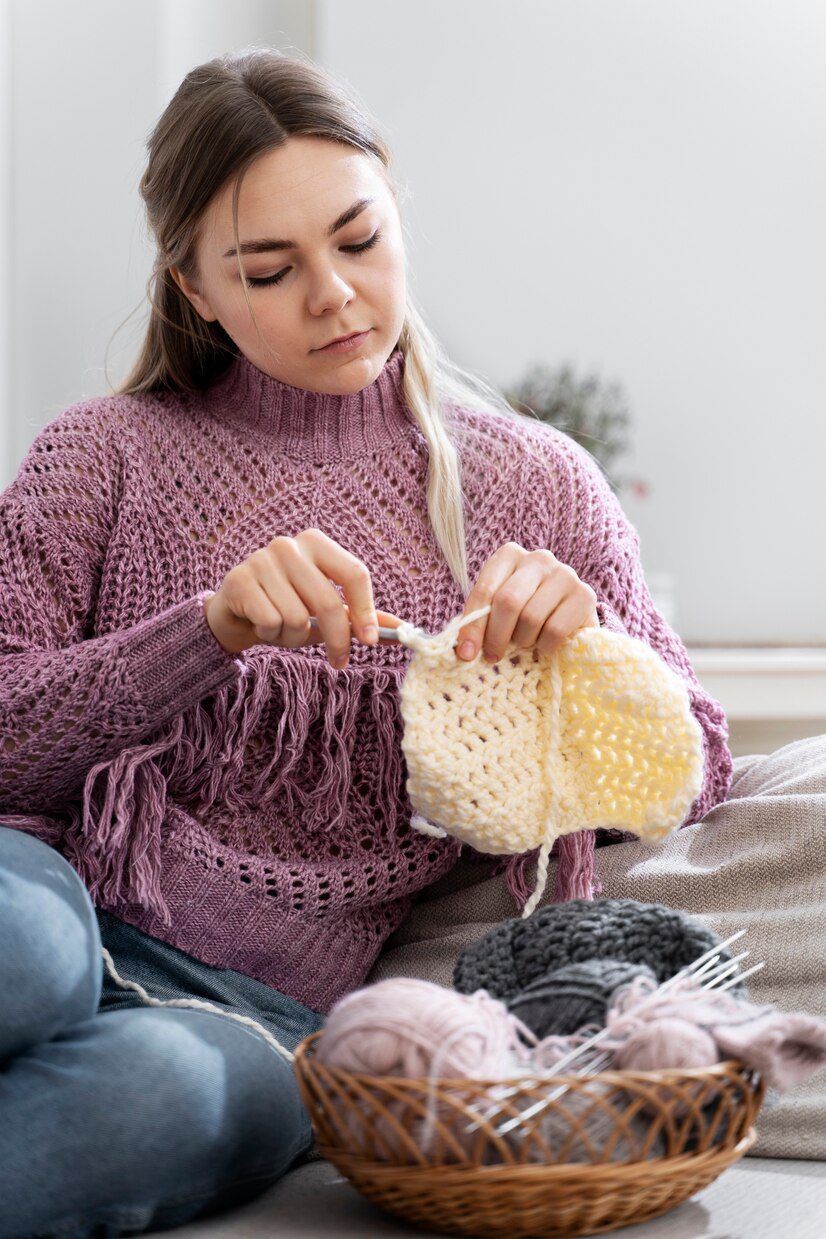Creating your own beaded bracelets allows you to design unique pieces of jewelry that perfectly match your style and personality. Whether you’re looking for a relaxing hobby, a way to make personalized gifts, or even start a small business, learning how to make beaded bracelets opens up a world of creative possibilities. This comprehensive guide will walk you through everything you need to know about crafting beautiful beaded bracelets at home, from selecting materials to mastering various techniques.
Understanding Beaded Bracelet Basics
Before diving into specific techniques, it’s helpful to understand what makes beaded bracelets so versatile and popular. Beaded bracelets can range from simple, elegant designs to complex patterns with intricate details. They can be made with various materials, including glass beads, gemstones, wooden beads, or even plastic beads, depending on your preference and budget.
The beauty of making your own beaded bracelets is the freedom to customize every aspect—from the colors and textures to the size and overall design. You can create pieces that perfectly complement your wardrobe or make thoughtful gifts tailored to friends’ and family members’ tastes.
Essential Materials for Making Beaded Bracelets
Before starting your beaded bracelet project, gather these basic supplies:
Beads
The heart of any beaded bracelet is, of course, the beads themselves. Some popular options include:
Seed Beads: These tiny beads (usually 2mm to 3mm) come in various colors and finishes, perfect for intricate patterns and delicate designs. Common sizes include 10/0, 11/0, and 12/0, with higher numbers indicating smaller beads.
Glass Beads: Available in countless colors, shapes, and sizes, glass beads add sparkle and visual interest to your bracelets.
Gemstone Beads: Natural stones like turquoise, amethyst, or jade offer unique colors and patterns, plus a touch of luxury.
Wooden Beads: Lightweight and eco-friendly, wooden beads create a rustic, bohemian look.
Acrylic Beads: An affordable alternative to glass, acrylic beads come in many colors and styles.
Stringing Materials
Your choice of stringing material affects both the appearance and durability of your bracelet:
Beading Thread: Strong, thin thread specifically designed for beadwork. Brands like Nymo or FireLine are popular choices for seed bead projects.
Elastic Cord: Perfect for stretch bracelets that slip on and off without clasps. Ideal for beginners and children’s projects.
Beading Wire: Flexible but strong, beading wire (like Tigertail) works well for heavier beads and everyday-wear bracelets.
Memory Wire: Pre-coiled wire that maintains its shape, creating wrap-around bracelets without clasps.
Tools and Findings
Complete your supply list with these essential tools and findings:
Beading Needles: Thin, flexible needles with small eyes, designed to fit through tiny bead holes.
Scissors: Sharp, precision scissors for cutting thread and cord cleanly.
Crimping Pliers: Specialized pliers for securing crimp beads when using beading wire.
Round-Nose Pliers: Helpful for making loops and working with wire.
Clasps: Various closure options including lobster clasps, toggle clasps, or magnetic clasps.
Crimp Beads: Small metal beads used to secure beading wire.
Jump Rings: Small metal rings that connect components like clasps to your bracelet.
Four Popular Beaded Bracelet Techniques
Now that you have your materials ready, let’s explore four distinct techniques for creating beautiful beaded bracelets.
1. Stretch Elastic Beaded Bracelets
Stretch bracelets are the perfect starting point for beginners due to their simplicity and the minimal tools required.
Materials Needed:
- Medium to large beads with holes large enough for elastic cord
- Elastic cord (0.5mm to 1mm thickness)
- Scissors
- Clear jewelry glue or nail polish
- Optional: tape to secure one end while working
Step-by-Step Instructions:
- Measure and Cut the Elastic: Cut a piece of elastic cord about 2-3 inches longer than your desired bracelet length to allow for knotting.
- Secure One End: Either tape one end of the elastic to your work surface or add a bead stopper to prevent beads from sliding off.
- Plan Your Design: Arrange your beads in your desired pattern before stringing them. This helps visualize the final look and ensure you have enough beads.
- String the Beads: Carefully slide beads onto the elastic cord in your chosen pattern until you reach the desired length. For an average adult bracelet, you’ll need approximately 7-8 inches of beads.
- Tie Securely: Remove the tape or bead stopper and tie the ends together with a surgeon’s knot (a double overhand knot). For extra security, tie a second knot over the first.
- Secure the Knot: Add a small drop of clear jewelry glue or clear nail polish to the knot. Allow it to dry completely.
- Trim and Hide the Ends: Once the glue is dry, carefully trim the excess elastic close to the knot, then slide a bead over the knot to hide it.
Stretch bracelets are versatile and comfortable to wear. They work particularly well with larger beads like gemstones, wooden beads, or chunky glass beads. Because they lack a clasp, they’re great for active lifestyles or for those who struggle with traditional clasps.
2. Daisy Chain Seed Bead Bracelets
The daisy chain technique creates a delicate, flower-like pattern using seed beads. This method introduces basic beadweaving techniques while creating a charming, feminine bracelet.
Materials Needed:
- Small seed beads in at least three colors (for petals, centers, and optional spacers)
- Beading needle
- Beading thread
- Scissors
- Clasp of your choice
- Optional: small dab of glue to secure knots
Step-by-Step Instructions:
- Prepare Your Thread: Cut a length of beading thread (about 1-2 yards) and thread your beading needle.
- Attach the Clasp: Tie one end of your thread to one half of your clasp. Secure with a knot and a small dab of glue if desired.
- Create Your First Flower:
- String 2 spacer beads (optional, can be green to represent stems)
- Add 4 beads for petals, followed by 1 center bead
- Pass your needle back through the first petal bead, creating a loop
- Pull the thread to tighten, forming half of your flower
- Add 3 more petal beads
- Pass your needle back through the last petal bead from the first step
- Pull to tighten, completing your first flower
- Continue the Chain: Repeat step 3, adding spacer beads between each flower. Each new flower begins by passing through the last petal of the previous flower.
- Finish the Bracelet: Once you’ve reached your desired length, attach the second half of your clasp. Secure with knots and a small dab of glue if needed.
- Weave in Ends: Pass your needle back through several beads, following the thread path, then trim any excess thread.
The daisy chain technique creates a flexible, delicate bracelet with a distinctive floral pattern. You can vary the colors for each flower or maintain a consistent color scheme throughout.
3. Chevron (V-Pattern) Beaded Bracelet
The chevron pattern creates a zigzag or V-shaped design that’s visually striking. This technique introduces more advanced beadweaving skills while still being accessible to motivated beginners.
Materials Needed:
- Seed beads in at least two contrasting colors
- Beading needle
- Beading thread
- Scissors
- Clasp
- Optional: small dab of glue to secure knots
Step-by-Step Instructions:
- Start Your Foundation:
- Thread your needle and tie one bead, your clasp, and two beads (all in the same color) onto your thread
- Tie a tight knot to secure the clasp
- Hold the clasp in your left hand and pass your needle up through the center bead
- Build Your First V:
- Add three beads in your second color
- Pass your needle through the center bead of the previous row from bottom to top
- Pull tight to form the beginning of your V shape
- Flip the work over
- Pass your needle up through the first and middle beads of the three you just added
- Continue the Pattern:
- Add three more beads in your next color
- Pass your needle through the center bead of the previous row
- Pull tight, then flip
- Pass through the first and middle beads of the three you just added
- Repeat until your bracelet reaches desired length
- Add the Final Clasp:
- Add one bead in your last row’s color
- Add your clasp
- Add one more bead
- Pass through the last row again to secure
- Tie a tight knot
- Reinforce the Edges:
- Pass your needle through the base of the first V
- Add a bead matching the V color
- Pass through the next bead, continuing down the side
- Work your way around the entire bracelet, adding beads to fill in the edges
- Secure with knots when complete
The chevron pattern creates a structured yet flexible bracelet with a distinctive zigzag appearance. This technique allows for creative color patterns and a more substantial feel than single-strand bracelets.
4. Right Angle Weave (Zigzag) Bracelet
The right angle weave creates a flat, woven bracelet with a professional appearance. This technique is slightly more advanced but produces a sturdy, impressive result.
Materials Needed:
- Seed beads in at least two colors (one for border, one or more for the pattern)
- Beading needle
- Beading thread
- Scissors
- Clasp
- Optional: small dab of glue to secure knots
Step-by-Step Instructions:
- Create Your Foundation:
- Thread your needle and add 6 beads: four border-colored beads and two in your pattern color
- Pass your needle back up through all beads from bottom to top
- Pull tight to form a square with three beads on each side
- Tie a knot and pass your needle up through the two pattern-colored beads
- Build Your First Row:
- Add three beads: one border-colored and two in your pattern color
- Pass your needle down through the pattern-colored bead from the previous row (skipping the first border bead you just added)
- Pull tight to secure
- Start Your Next Row:
- Add one border-colored bead and one bead in your next pattern color
- Pass your needle up through the last pattern-colored bead in your first row
- Add one border-colored bead and two beads in your current pattern color
- Pass down through the pattern-colored bead, pulling tight
- Continue the Pattern:
- Repeat steps 3-4, alternating colors as desired until your bracelet reaches the preferred length
- Attach your clasp to both ends, securing with knots
- Weave in any loose ends and trim excess thread
The right angle weave creates a substantial, durable bracelet with a woven appearance. This technique allows for complex color patterns and a professional finish that looks impressive whether using a single color or multiple colors throughout.
Tips for Successful Beaded Bracelet Making
Choosing the Right Beads
Consider Bead Size and Hole Size: Ensure your chosen beads have holes large enough for your stringing material. Smaller seed beads work best with thin beading thread and needles, while larger beads accommodate thicker cord or wire.
Quality Matters: Higher-quality beads typically have more consistent sizes, better color stability, and smoother holes, resulting in more professional-looking bracelets.
Color Coordination: Choose beads that either complement or contrast intentionally. Consider using color theory basics—complementary colors (opposite on the color wheel) create vibrant combinations, while analogous colors (next to each other) create harmonious blends.
Measuring Correctly
Standard Sizes: Most adult bracelets range from 7 to 8 inches in length. Children’s bracelets are typically 5 to 6 inches. Add about half an inch to accommodate the clasp.
Custom Fit: For the perfect fit, measure the recipient’s wrist and add half an inch to one inch, depending on how loose they prefer their bracelets.
Consider Design Impact: Some beading techniques, like daisy chains or chevron patterns, create bracelets that are less stretchy than single strands. For these designs, add a little extra length.
Working with Different Materials
Thread Conditioning: For natural thread types, running the thread through beeswax or thread conditioner reduces fraying and strengthens the thread.
Elastic Tips: Don’t stretch elastic cord while beading. After knotting, allow the knot to relax before trimming and applying glue.
Wire Precautions: Use nylon-coated wire for everyday bracelets to prevent breakage. Always use crimp beads to secure wire ends properly.
Common Challenges and Solutions
Knots Coming Undone
Solution: Use a surgeon’s knot (a double overhand knot) for more security. Apply a tiny dab of clear nail polish or jewelry glue to the knot and let it dry completely before trimming excess.
Elastic Stretching Out
Solution: Use quality elastic cord and replace it before it becomes too stretched. Avoid pulling too hard while stringing beads.
Uneven Tension
Solution: Practice maintaining consistent tension while beading. For woven patterns, periodically check your work and adjust tension as needed.
Beads Breaking or Cracking
Solution: Handle glass and gemstone beads with care. Store finished bracelets in soft pouches or jewelry boxes to prevent damage.
Personalizing Your Beaded Bracelets
One of the greatest joys of making beaded bracelets is the ability to personalize them. Here are some ways to make your creations unique:
Incorporate Meaningful Charms
Add memory-evoking charms that represent hobbies, achievements, or special moments. These personal touches transform a simple bracelet into a meaningful keepsake.
Create Color Themes
Design bracelets around specific color palettes that reflect seasons, favorite sports teams, birthstones, or even awareness causes.
Mix Textures and Materials
Combine different bead types—like pairing polished gemstones with matte wooden beads or mixing metallic beads with colorful seed beads—to create visual interest and texture contrasts.
Add Personalized Elements
Incorporate letter beads to spell names or meaningful words, or use birthstone-colored beads to represent family members.
Caring for Your Beaded Bracelets
To ensure your handmade beaded bracelets last for years, proper care is essential:
Storage Recommendations
Store beaded bracelets flat or hanging to prevent tangling. For elastic bracelets, store them unstretched to maintain elasticity. Keep bracelets in separate compartments or pouches to prevent scratching.
Cleaning Guidelines
Most beaded bracelets can be gently wiped with a soft, slightly damp cloth. For specific materials like gemstones, research appropriate cleaning methods. Avoid submerging bracelets with thread or elastic in water for extended periods.
When to Restring
Watch for signs that a bracelet needs restringing: fraying thread, stretched elastic, or beads moving too freely. Periodic restringing extends the life of beloved pieces.
From Hobby to Business
If your beaded bracelet making evolves from a hobby into something more, consider these points:
Finding Your Niche
Identify what makes your beaded bracelets unique—whether it’s your color combinations, special techniques, or the materials you use. Specializing in a particular style or type of bracelet can help you stand out.
Pricing Your Work
Calculate the cost of materials, factor in your time at a fair hourly rate, and add a profit margin. Research comparable handmade jewelry to ensure your pricing is competitive yet profitable.
Selling Platforms
Explore various selling options including craft fairs, online marketplaces like Etsy, social media platforms, or even your own website. Each has different advantages and customer bases.
Conclusion
Learning how to make beaded bracelets opens the door to endless creative possibilities. From simple stretchy bands to intricate woven patterns, the techniques covered in this guide provide a solid foundation for your beaded jewelry journey.
Remember that like any craft, beaded bracelet making improves with practice. Don’t be discouraged if your first attempts aren’t perfect—each bracelet you create helps develop your skills and personal style. Start with simpler techniques and gradually challenge yourself with more complex patterns as your confidence grows.
Whether you’re creating beaded bracelets for personal enjoyment, as heartfelt gifts, or as potential products to sell, the satisfaction of wearing and sharing your handmade creations is truly rewarding. With a little patience and the techniques outlined in this guide, you’ll be creating beautiful beaded bracelets in no time.
Happy beading!












Leave a Reply